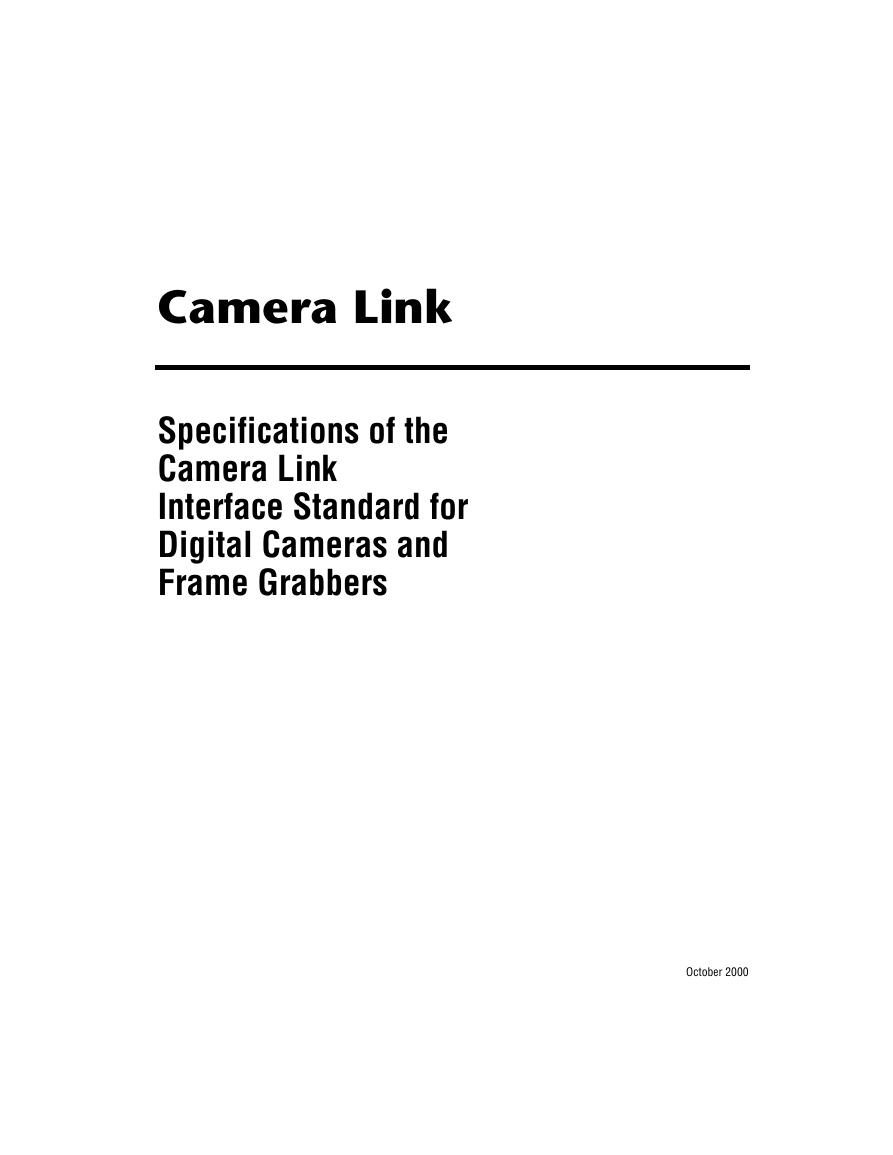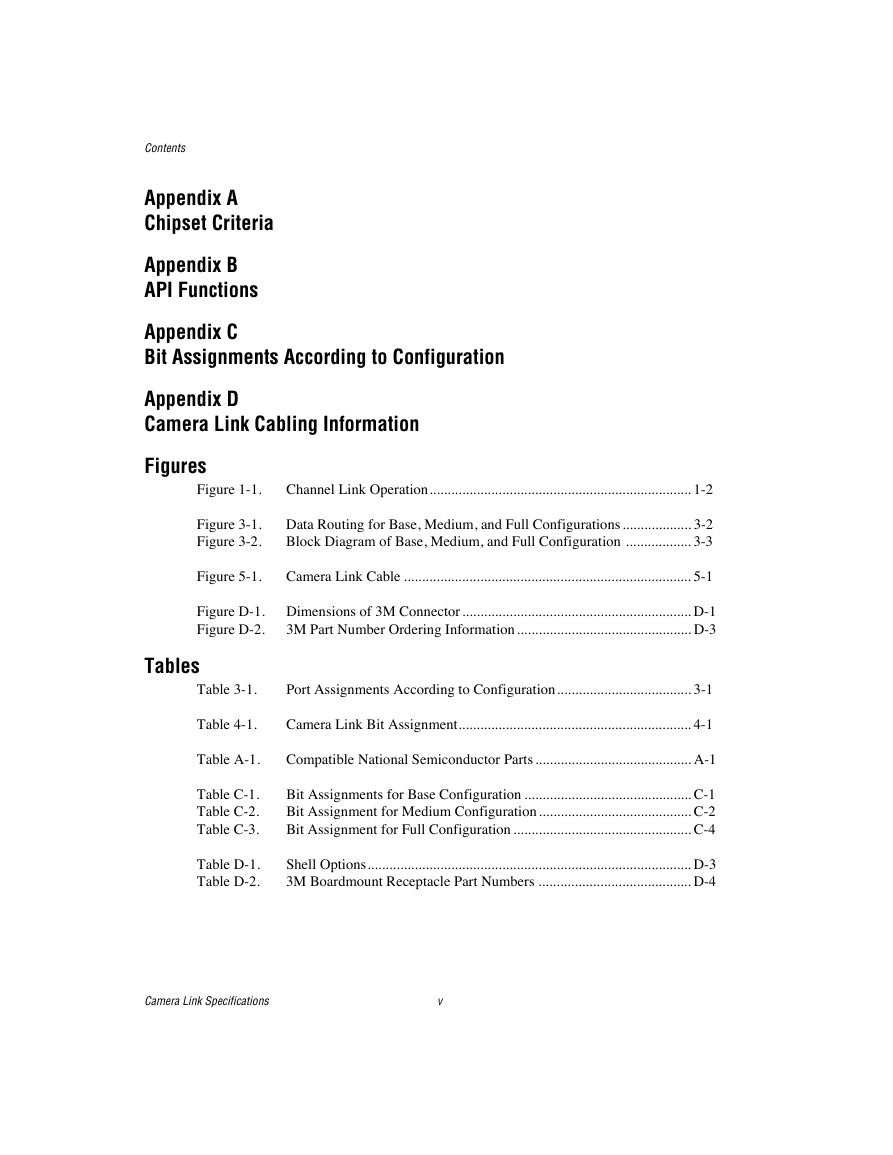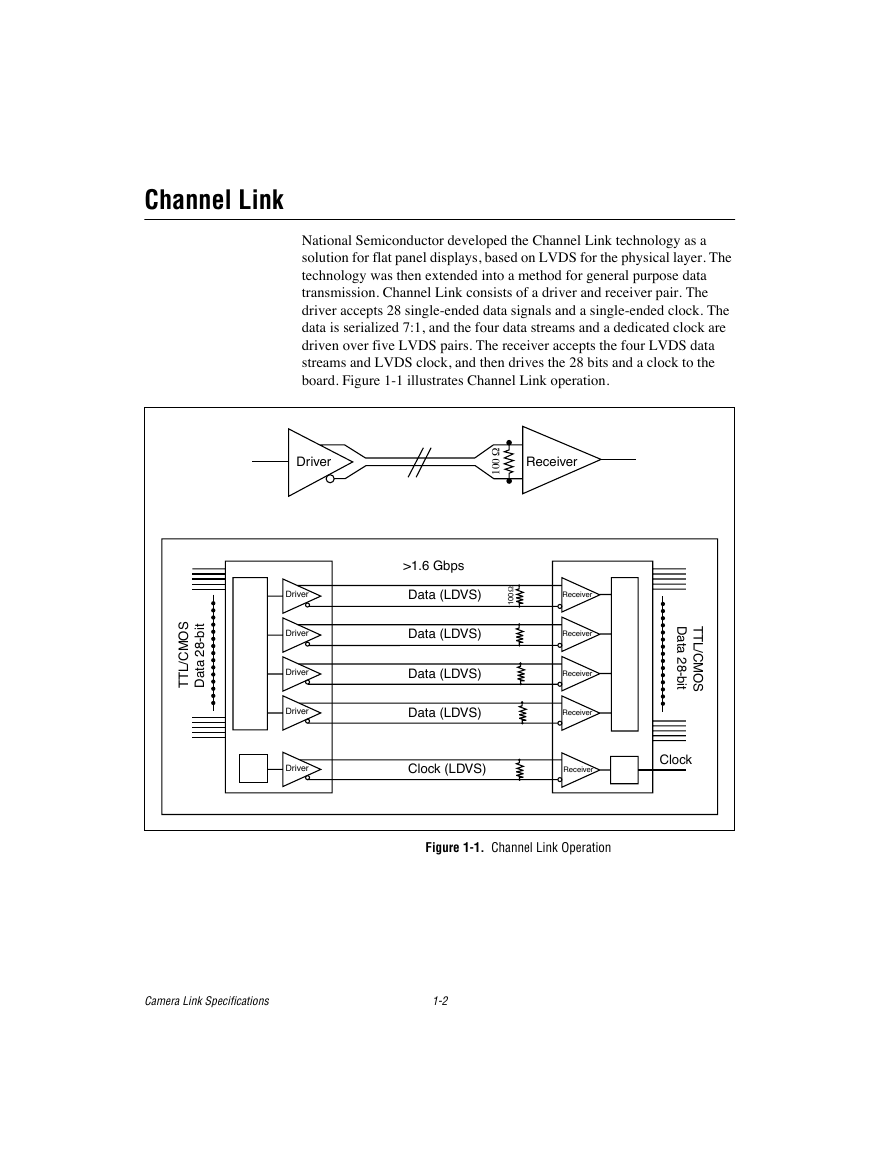Specifications of the Camera�Link Interface Standard for Digital Cameras and Frame�Grabbers
Table of Contents
Acknowledgements
About this Document
Chapter 1 Camera Link
Introduction
LVDS Technical Description
Channel Link
Technology Benefits
Smaller Connectors and Cables
High Data Transmission Rates
Chapter 2 Camera Signal Requirements
Video Data
Camera Control Signals
Communication
Power
Chapter 3 Port Assignments
Port Definition
Chapter 4 Bit Assignments
Chapter 5 Camera Link Connections
MDR 26-pin Connector
Camera Link Cable Pinout
Shielding Recommendations
Appendix A Chipset Criteria
Appendix B API Functions
Header File
Appendix C Bit Assignments According to Configuration
Appendix D Camera Link Cabling Information
Figures
Figure 1�1. Channel Link Operation
Figure 3�1. Data Routing for Base, Medium, and Full Configurations
Figure 3�2. Block Diagram of Base, Medium, and Full Configuration
Figure 5�1. Camera Link Cable
Figure D�1. Dimensions of the 3M Connector
Figure D�2. 3M Part Number Ordering Information
Tables
Table 3�1. Port Assignments According to Configuration
Table 4�1. Camera Link Bit Assignment�
Table 5�1. MDR-26 Connector Assignments�
Table A�1. Compatible National Semiconductor Parts
Table C�1. Bit Assignments for Base Configuration�
Table C�2. Bit Assignment for Medium Configuration�
Table C�3. Bit Assignment for Full Configuration�
Table D�1. Shell Options
Table D�2. 3M Boardmount Receptacle Part Numbers
















 2023年江西萍乡中考道德与法治真题及答案.doc
2023年江西萍乡中考道德与法治真题及答案.doc 2012年重庆南川中考生物真题及答案.doc
2012年重庆南川中考生物真题及答案.doc 2013年江西师范大学地理学综合及文艺理论基础考研真题.doc
2013年江西师范大学地理学综合及文艺理论基础考研真题.doc 2020年四川甘孜小升初语文真题及答案I卷.doc
2020年四川甘孜小升初语文真题及答案I卷.doc 2020年注册岩土工程师专业基础考试真题及答案.doc
2020年注册岩土工程师专业基础考试真题及答案.doc 2023-2024学年福建省厦门市九年级上学期数学月考试题及答案.doc
2023-2024学年福建省厦门市九年级上学期数学月考试题及答案.doc 2021-2022学年辽宁省沈阳市大东区九年级上学期语文期末试题及答案.doc
2021-2022学年辽宁省沈阳市大东区九年级上学期语文期末试题及答案.doc 2022-2023学年北京东城区初三第一学期物理期末试卷及答案.doc
2022-2023学年北京东城区初三第一学期物理期末试卷及答案.doc 2018上半年江西教师资格初中地理学科知识与教学能力真题及答案.doc
2018上半年江西教师资格初中地理学科知识与教学能力真题及答案.doc 2012年河北国家公务员申论考试真题及答案-省级.doc
2012年河北国家公务员申论考试真题及答案-省级.doc 2020-2021学年江苏省扬州市江都区邵樊片九年级上学期数学第一次质量检测试题及答案.doc
2020-2021学年江苏省扬州市江都区邵樊片九年级上学期数学第一次质量检测试题及答案.doc 2022下半年黑龙江教师资格证中学综合素质真题及答案.doc
2022下半年黑龙江教师资格证中学综合素质真题及答案.doc